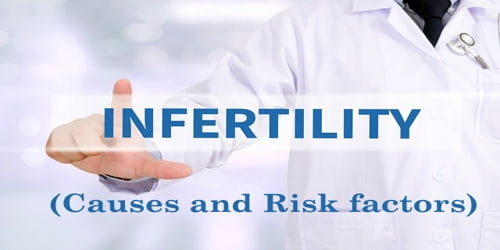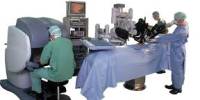Infertility (Causes and Risk factors)
Definition: Infertility happens when a couple cannot conceive after having regular unprotected sex. It is usually not the natural state of a healthy adult, except notably among certain eusocial species (mostly haplodiploid insects).
Infertility also refers to women who are unable to carry a pregnancy to term. The Centers for Disease Control and Prevention (CDC) estimates that at least one in ten U.S. women of childbearing age has difficulty getting pregnant or staying pregnant.
There are many causes of infertility, including some that medical intervention can treat. The most common cause of female infertility is ovulatory problems which generally manifest themselves by sparse or absent menstrual periods. Male infertility is most commonly due to deficiencies in the semen, and semen quality is used as a surrogate measure of male fecundity.
Women who are able to conceive but not carry a pregnancy to term may also be diagnosed with infertility.
Being diagnosed with infertility doesn’t mean that their dreams of having a child have come to an end. It may take some time, but a significant number of infertile couples will eventually be able to have a child. Some will do so on their own. Others will need medical assistance.
The World Health Organization defines infertility as follows:
“Infertility is “a disease of the reproductive system defined by the failure to achieve a clinical pregnancy after 12 months or more of regular unprotected sexual intercourse (and there is no other reason, such as breastfeeding or postpartum amenorrhoea). Primary infertility is infertility in a couple who have never had a child. Secondary infertility is the failure to conceive following a previous pregnancy. Infertility may be caused by an infection in the man or woman, but often there is no obvious underlying cause.”

Causes and Risk factors of Infertility: Antisperm antibodies (ASA) have been considered as infertility cause in around 10–30% of infertile couples. In both men and women, ASA production is directed against surface antigens on sperm, which can interfere with sperm motility and transport through the female reproductive tract, inhibiting capacitation and acrosome reaction, impaired fertilization, influence on the implantation process, and impaired growth and development of the embryo.
Infertility causes can affect one or both partners. In general:
- In about one-third of cases, there is an issue with the male.
- In about one-third of cases, there is an issue with the female.
- In the remaining cases, there are issues with both the male and female or no cause can be identified.
Common causes of infertility of females include:
- ovulation problems (e.g. polycystic ovarian syndrome, PCOS, the leading reason why women present to fertility clinics due to anovulatory infertility.)
- tubal blockage
- pelvic inflammatory disease caused by infections like tuberculosis
- age-related factors
- uterine problems
- previous tubal ligation
- endometriosis
- advanced maternal age
- immune infertility
Some causes of male infertility include:
- Varicocele, which occurs when the enlarged veins on a man’s testicle(s) cause temperature increases that can affect the number or shape of the sperm.
- Retrograde ejaculation, which occurs when the muscles of the bladder wall do not function properly and sperm are forced backward into the bladder instead of forward out the urethra. This can be caused by surgery, spinal cord injury, certain medications, or aging.
- Structural abnormalities that damage or block testes, the ducts that carry the mature sperm, or other reproductive structures.
- Underdeveloped, undescended, or injured testes.
Infertility is not just a woman’s problem. Men can be infertile, too. In fact, men and women are equally likely to have a fertility problem. According to WomensHealth.gov, about one-third of infertility cases are attributable to female infertility. However, men’s problems account for another third of all infertility cases. The final third may be a combination of male and female infertility or may have no known cause.
Risk factors for infertility include:
- older age
- smoking
- history of sexually transmitted infections (STIs)
- very high or very low weight
- heavy alcohol use
Women at risk of fertility problems include those with eating disorders, such as anorexia or bulimia, and women who follow a very low calorie or restrictive diet. Insufficient exercise contributes to obesity, which increases the risk of infertility. Less often, ovulation problems may be associated with frequent strenuous, intense exercise in women who are not overweight.
Information Source:
















